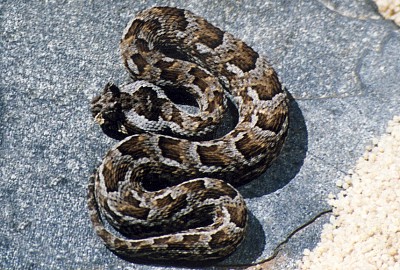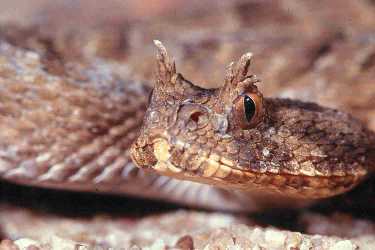Physical Description:
Small snake between 30-40cm; the females are typically larger than the
males. They have 2 to 7 elongated horns over their eyes.
They are a grayish color with angular spots.
Social Organization::
Solitary unless mating.
Special Adaptations:
It buries itself in loose sand for camouflage against predators
and prey. It also has a sidewinding locomotion to help it move
through the desert sands. When feeling threatened it hisses loudly,
and when it strikes its whole body comes completely off the ground.
Reproductive Behavior:
It is a live-bearer with births of 5-14 young at a time.
The Animal at
the Zoo:
Not on display.
Page Author:
Chad Martin: chad_24@sbcglobal.net
Sources and Links:
http://www.geocities.com/snakes_of_sa/mhadder.htmlhttp://www.herpsa.co.za/SAREP/many-horned_adder.htm


